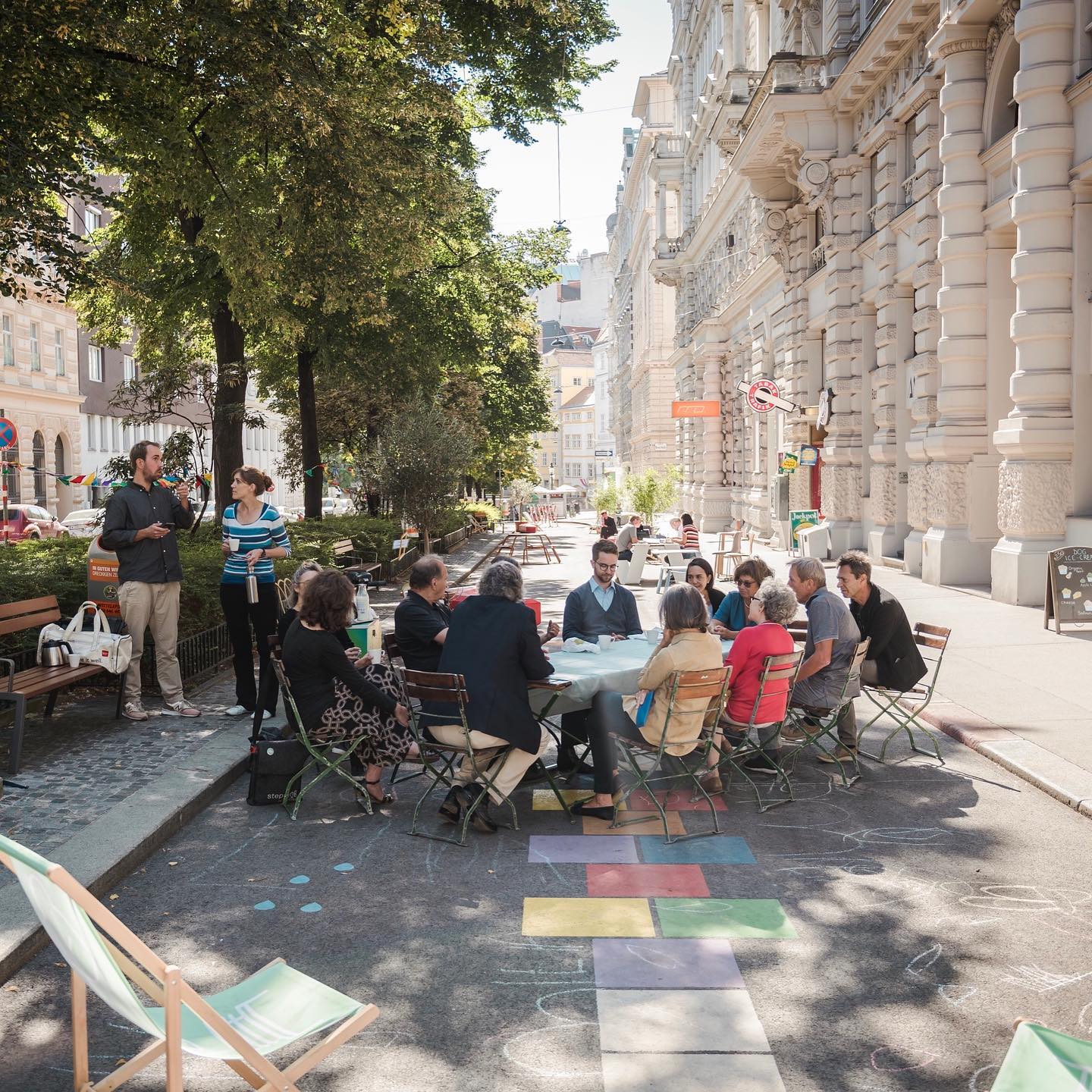
Nachlese: Dialog zum „Liquid Public Space“ Donaukanal
Der Schwimmverein Donaukanal hat es sich zur Aufgabe gemacht, eine traditionsreiche Kultur – das Schwimmen im Donaukanal – wieder aufleben zu lassen. Am 30. Juli 2020 war die STADTpsychologie eingeladen, über den „flüssigen“ öffentlichen Raum, restorative Environments und natürlich über die Beziehungen zum Donaukanal zu sprechen.
 Jeden Donnerstag im Juli 2020 gestaltete das Team rund um Amelie Schlemmer, Ana Mumzlade, Amanda Sperger und Fabian Ritzi vom Studio of Social Design der Angewandten, ein ambitioniertes Programm und lud verschiedenste Personen aus den Bereichen Wissenschaft, Kunst und Schwimmpraxis zu Schwimmgesprächen. Gemeinsam mit der Urbanistin Christine Schraml war die STADTpsychologie Teil des dialogorientierten Schwimmgesprächs. Vom aktuellen „Aneignen“ des rund 850.000 m2 großen „Liquid Public Spaces“ Donaukanal über die historische Entstehungsgeschichte, haben wir uns mit allen Interessierten ausgetauscht und unser Wissen über das „Wesen Donaukanal“ geteilt.
Jeden Donnerstag im Juli 2020 gestaltete das Team rund um Amelie Schlemmer, Ana Mumzlade, Amanda Sperger und Fabian Ritzi vom Studio of Social Design der Angewandten, ein ambitioniertes Programm und lud verschiedenste Personen aus den Bereichen Wissenschaft, Kunst und Schwimmpraxis zu Schwimmgesprächen. Gemeinsam mit der Urbanistin Christine Schraml war die STADTpsychologie Teil des dialogorientierten Schwimmgesprächs. Vom aktuellen „Aneignen“ des rund 850.000 m2 großen „Liquid Public Spaces“ Donaukanal über die historische Entstehungsgeschichte, haben wir uns mit allen Interessierten ausgetauscht und unser Wissen über das „Wesen Donaukanal“ geteilt.
Im Newsletter des Schwimmvereins Donaukanal, 9. August 2020, liest sich die Zusammenfassung dieses angeregten Schwimmabends wie folgt:
~ Liquid Public Space
During our swimming talk with Cornelia and Christina we had explosive, funny and important discussions on the topic of ‘liquid public space’ in and on the Danube Canal. It is striking that the Donaukanal is defined and regulated as a public space, however, the public image of the area in our collective imagination only traces the banks of the Kanal, and never the enormous space in-between – the flowing water. Schwimmverein Donaukanal believes that the communal enjoyment and activation of the entire Danube Canal zone only really gets going through swimming.
 Who does the Donaukanal actually belong to? What is your relationship with the Kanal? How well do you know the nature of the Donaukanal? How do you imagine the future of swimming in the Donaukanal? What changes in you if you (often) go swimming there?
Who does the Donaukanal actually belong to? What is your relationship with the Kanal? How well do you know the nature of the Donaukanal? How do you imagine the future of swimming in the Donaukanal? What changes in you if you (often) go swimming there?
Commercial vs. Public Use: So who does the Donaukanal belong to? Christina illustrated the current dynamics of the Donaukanal area with the case of Hermann Strandbar: classified as a public space in the zone plan of Vienna, Hermann Strandbar is now fully commercialised – on this refreshing site, probably no one would feel comfortable drinking a beer they have brought with them. Nevertheless, the Vienna master plan provides for non-consumption zones, an important step forward.
 From the urban psychology perspective, Cornelia presented her own research – namely, the discoveries she made about the different types of relationships that citizens have with the Donaukanal. The personal relationship to the Donaukanal can change dramatically, once the citizen start swimming in the area. Embodied experiences and shared social activities better connect us to the places we live in, we deepen the relationship and develop a stronger feeling of belonging and care.
From the urban psychology perspective, Cornelia presented her own research – namely, the discoveries she made about the different types of relationships that citizens have with the Donaukanal. The personal relationship to the Donaukanal can change dramatically, once the citizen start swimming in the area. Embodied experiences and shared social activities better connect us to the places we live in, we deepen the relationship and develop a stronger feeling of belonging and care.
We have also worked out a distinction between a communal and a public space. While in the public space an authority such as the city or the state regulates the set of rules, in the communal space the common use and the diversity of interests and groups is repeatedly renegotiated as a process – this is exactly the invitation on the Danube Canal to all Viennese and others, who are ready to embark on such an adventure.
>> Link: Schwimmverein Donaukanal und Kunsthaus Wien
>> LINK: Masterplan Donaukanal






